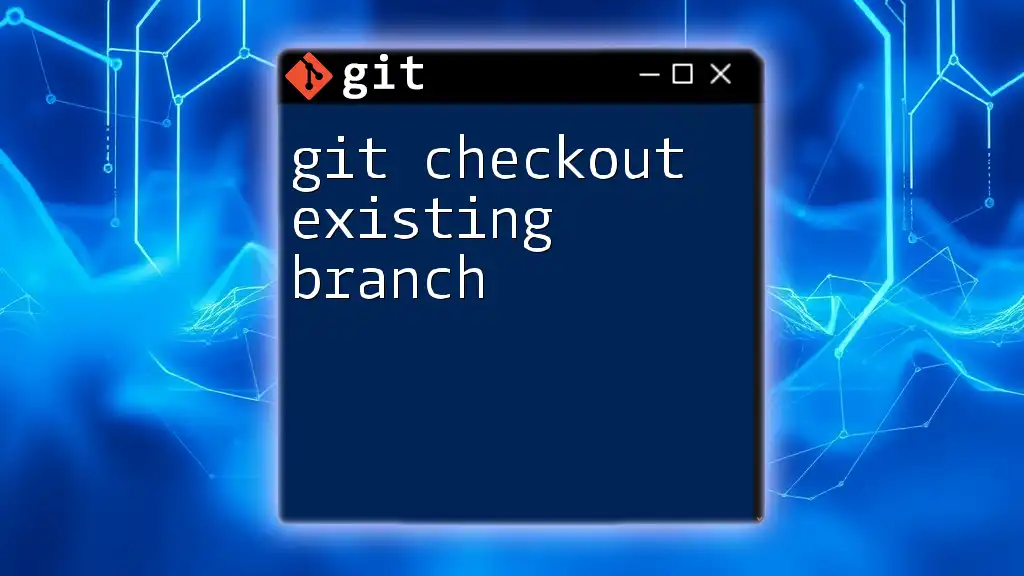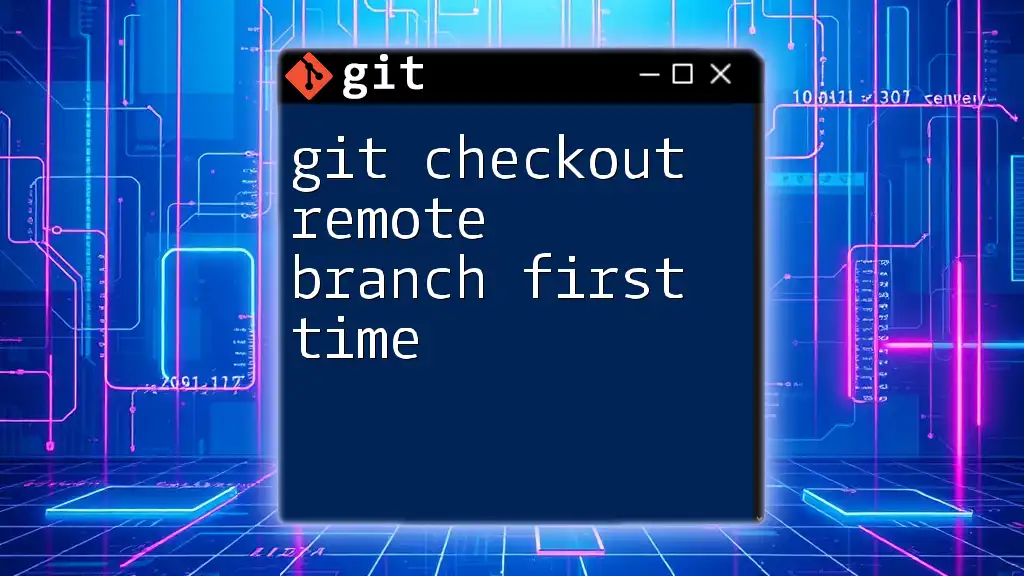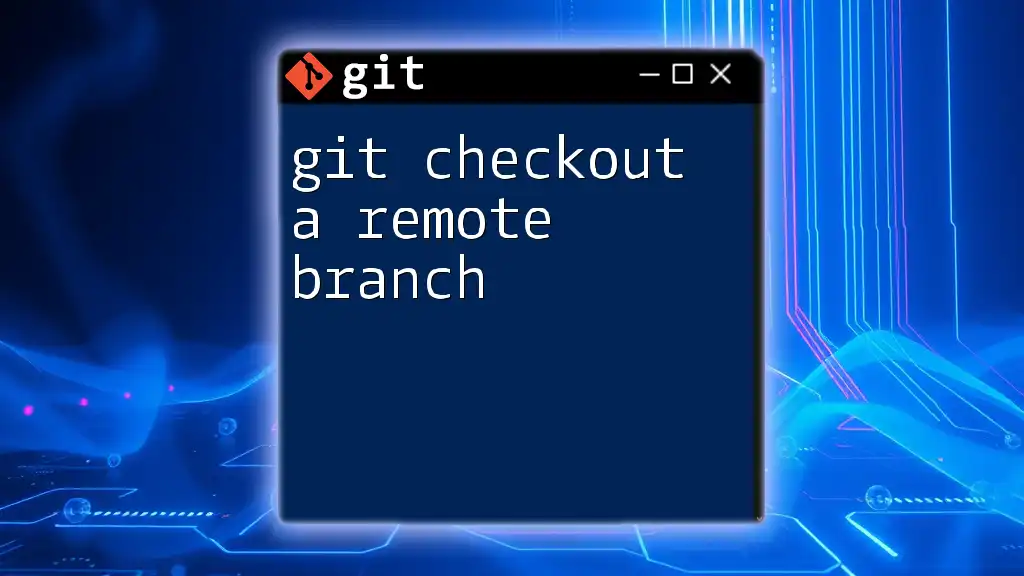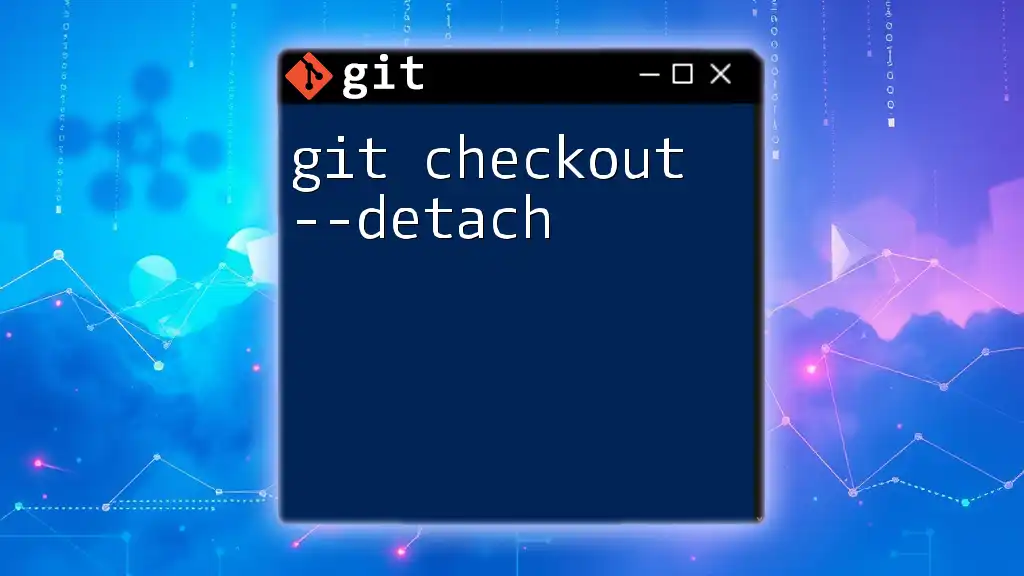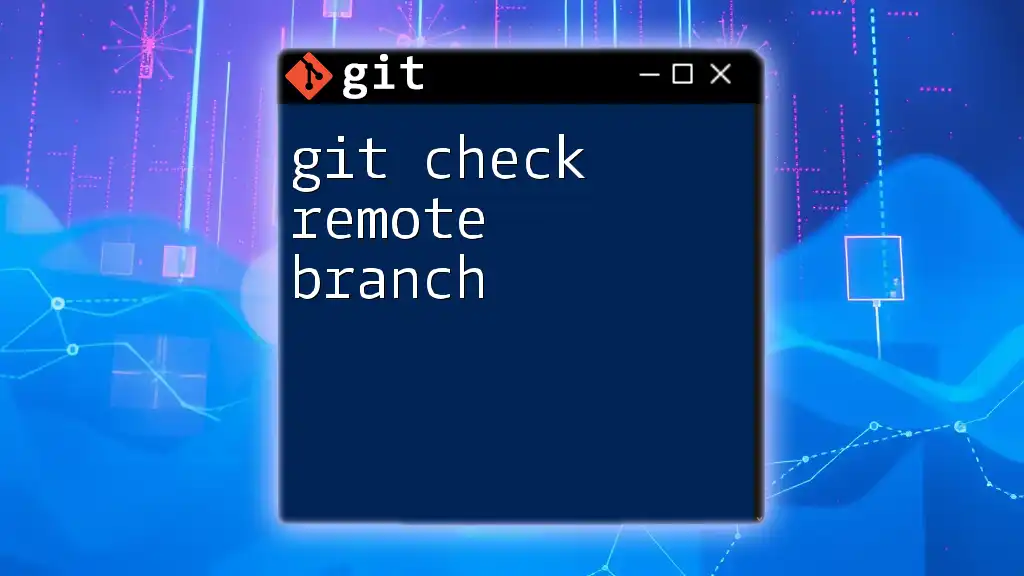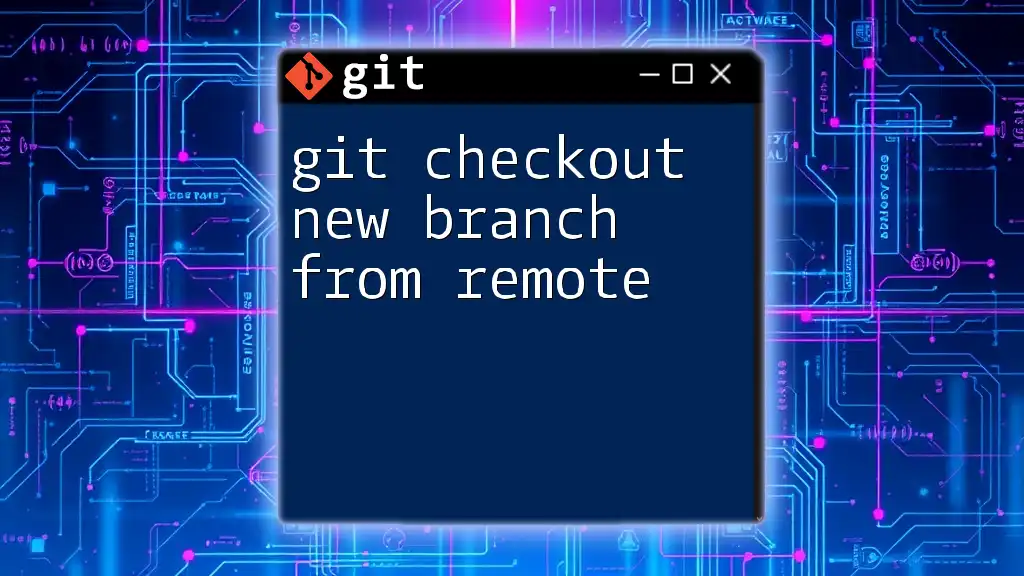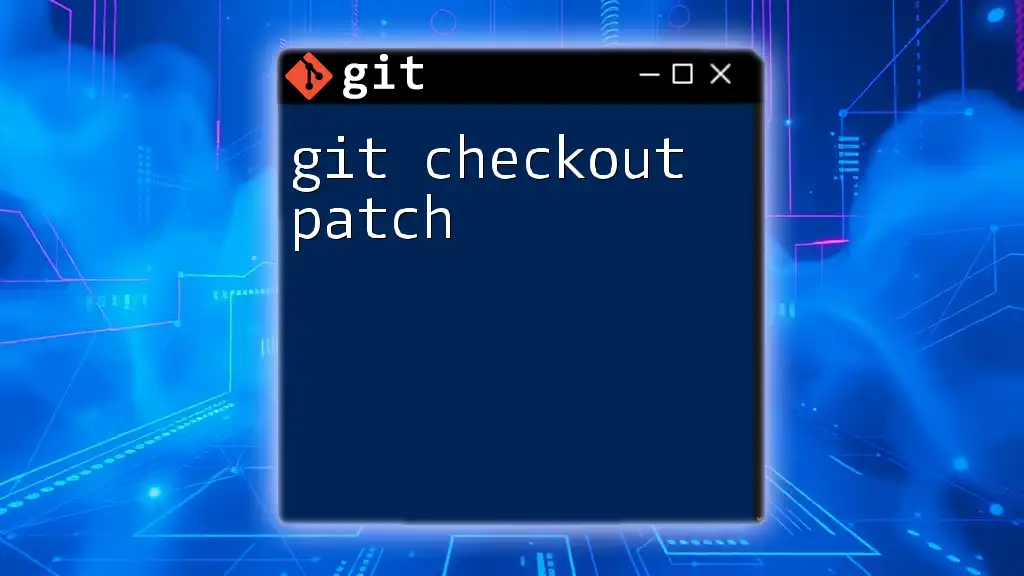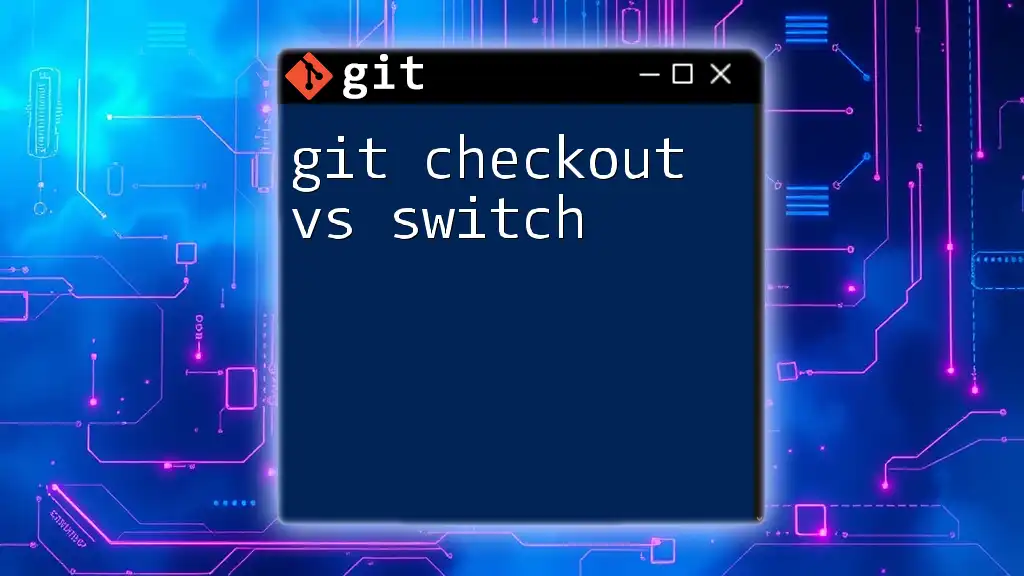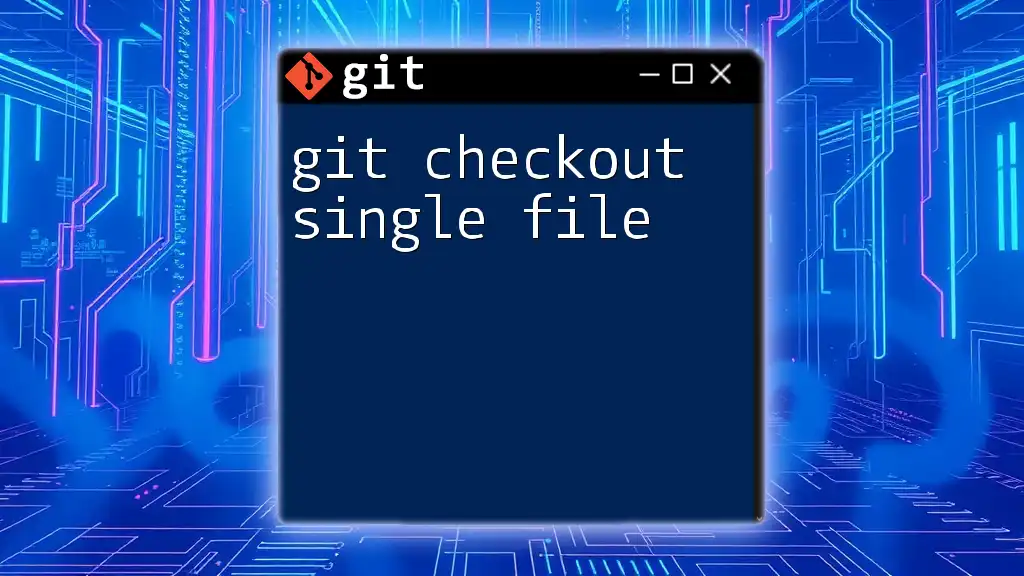To switch to an existing branch in Git, use the `git checkout` command followed by the branch name.
git checkout branch-name
Understanding Git Branches
What is a Branch?
A branch in Git is essentially a lightweight movable pointer to a commit. When you start making changes, a branch allows you to effectively create an isolated context to work on new features, bug fixes, or any other task without affecting the main codebase (often referred to as the main or master branch). This functionality is crucial for parallel development, allowing multiple streams of work to occur at once.
For example, imagine you are developing a new feature called "user authentication." You can create a new branch called `feature/user-auth` to work on it while the rest of your team continues to work on other features or fixes in the main branch.
Different Types of Branches
- Local branches are those that exist on your local machine and are not yet pushed or shared with others.
- Remote branches, on the other hand, are branches that live on a remote repository. These branches allow you to collaborate with others and receive updates from the main repository.
- Tracking branches are local branches that track a remote branch. This means that you can easily synchronize your changes with the remote repository.
Understanding these types of branches sets the stage for efficiently using the `git checkout existing branch` command as you navigate through your projects.
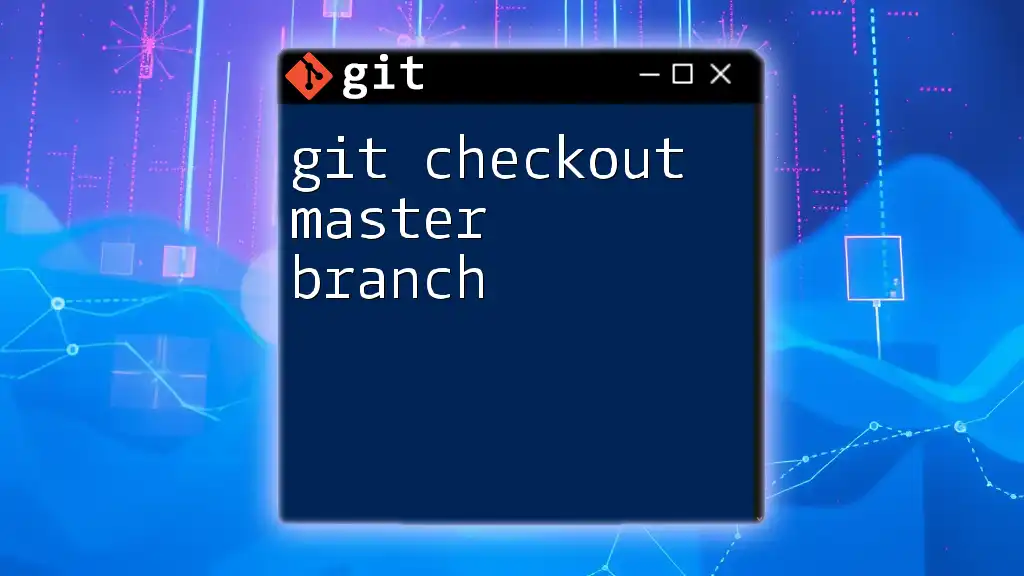
The `git checkout` Command
What is `git checkout`?
The `git checkout` command is indispensable for managing branches in your Git workflow. It allows you to switch between branches or even revert files to a previous state. When you use `git checkout`, you're instructing Git to make a particular branch the current working branch, effectively changing your working environment and context.
Why Use `git checkout` to Switch Branches?
Using `git checkout` to switch branches can enhance productivity by providing quick access to different lines of development. This is particularly beneficial in collaborative environments where changes are high and different tasks are often being handled simultaneously.
By mastering this command, you can maintain organized and separate lines of development without interference, making your workflow more efficient and streamlined.
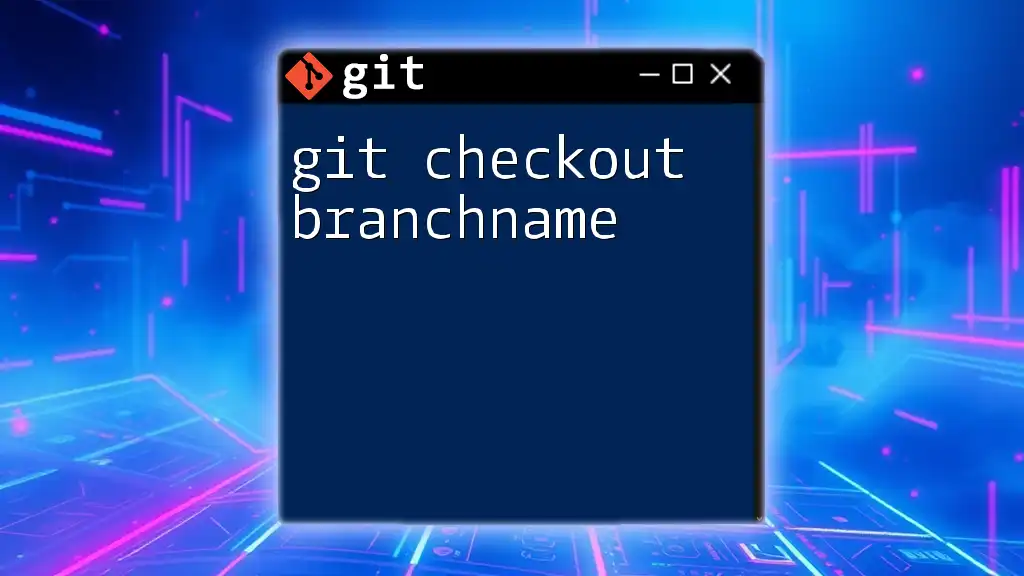
How to Checkout an Existing Branch
Checking the Current Branch
Before you can switch branches, it’s essential to know what your current branch is. You can do this by using the command:
git branch
This command will list all local branches in your repository, with an asterisk next to the currently active branch. Understanding your current position is vital as it informs decisions regarding branch management.
Switching to an Existing Branch
To switch to another branch, use the following syntax:
git checkout <branch-name>
For example, if you want to switch to a branch called `feature-branch`, you would run:
git checkout feature-branch
Executing this command updates your working directory to reflect the contents of the `feature-branch`, including all files and commits unique to that branch. This is a seamless way to transition your development efforts.
Handling Uncommitted Changes
The Impact of Uncommitted Changes
When attempting to switch branches, uncommitted changes can create roadblocks. If you try to checkout an existing branch while making changes in your current branch, Git may prevent you from switching to avoid potential conflicts. You might encounter a warning message such as:
error: Your local changes to the following files would be overwritten by checkout:
This ensures you don't accidentally lose your work.
Strategies for Managing Changes
To work around this, you can manage your uncommitted changes in a couple of ways:
- Stashing changes: Temporarily store your uncommitted changes so you can switch branches without committing them.
git stash
git checkout <branch-name>
git stash pop
By stashing your changes, you can safely switch branches and then apply your stashed changes back afterward.
- Committing changes: If your changes are ready to be preserved, consider making a temporary commit. Here’s how to do it:
git add .
git commit -m "WIP: Work in progress"
git checkout <branch-name>
This way, you keep a record of your changes without tying them directly to a specific feature or task.
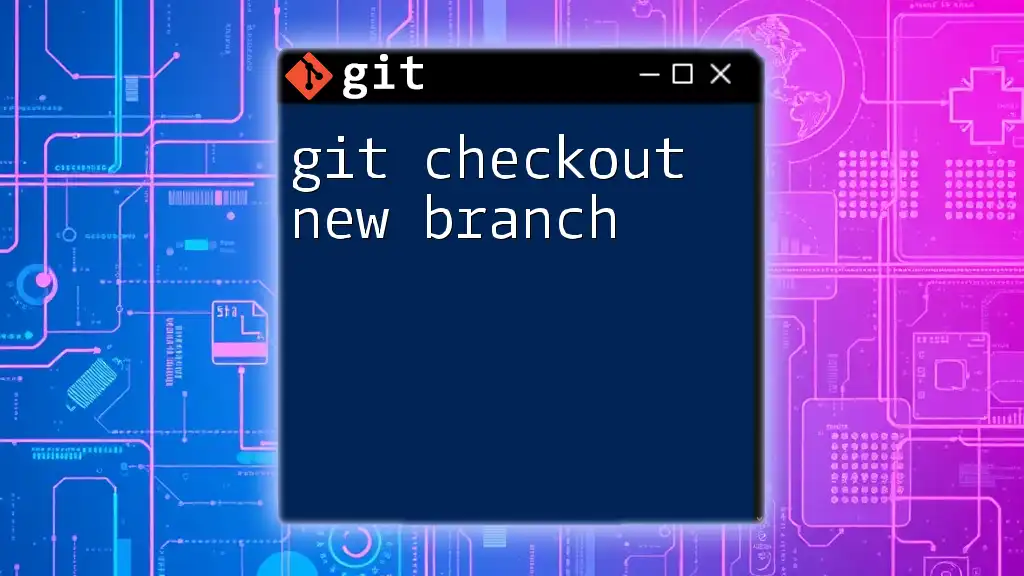
Troubleshooting Common Issues
Branch Does Not Exist
One common error occurs when you try to checkout a branch that doesn’t exist. If you attempt a command like:
git checkout non-existent-branch
You could see an error message such as:
error: pathspec 'non-existent-branch' did not match any file(s) known to git
This prompts you to double-check your branch name for typos or to create the branch if it truly does not exist.
Checking Out from a Remote Branch
If you want to checkout a branch that exists on a remote repository, you can do this by creating a local branch that tracks the remote branch:
git checkout -b local-branch-name origin/remote-branch-name
This command creates a new branch locally and sets it to track the specified remote branch, making it easier to keep up-to-date with remote changes.
Detached HEAD State
When checking out a specific commit instead of a branch, you may enter a detached HEAD state. This means that you are no longer on a branch but instead pointing directly to a commit. This can confuse users who expect to be on a branch.
You might check out a commit like this:
git checkout <commit-hash>
To get back to a branch, simply use `git checkout <branch-name>` to return your workspace to a branch context.
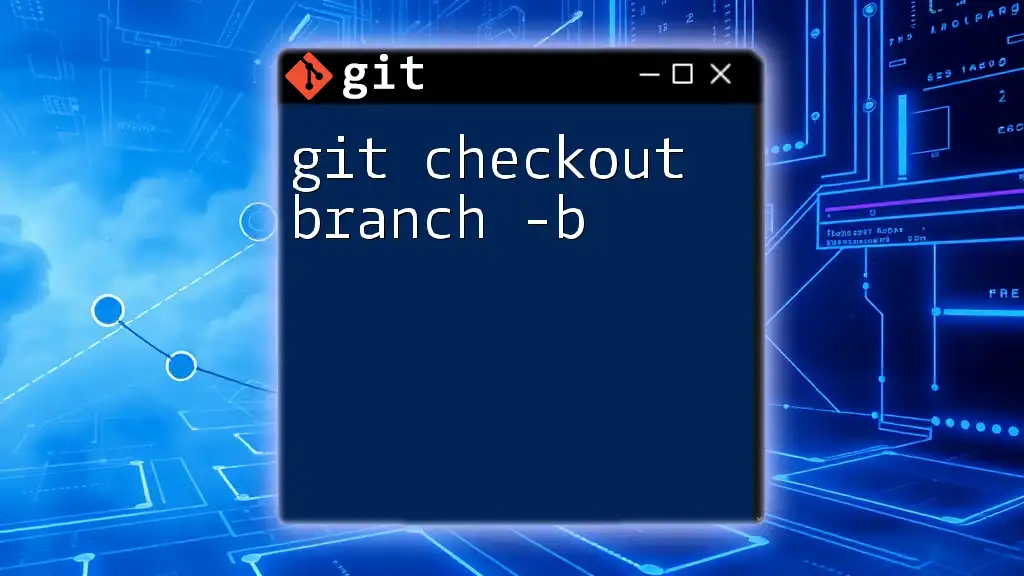
Alternatives to `git checkout`
Using `git switch`
With advancements in Git, a new command called `git switch` has been introduced, specifically designed to handle branch switching more intuitively. Using this command can make your workflow clearer and more straightforward. The syntax is simple:
git switch <branch-name>
The `git switch` command provides a user-friendly way to handle branch transitions and helps in avoiding situations such as the detached HEAD state, making it a valuable command to add to your toolkit.
Conclusion
In this guide, we’ve explored the importance of the `git checkout existing branch` command and its role in managing your workflow within Git repositories. By understanding how to check your current branch, switch between existing branches, handle uncommitted changes, troubleshoot issues, and leverage alternatives like `git switch`, you’re now equipped with both the knowledge and the confidence to navigate your development environment efficiently.
As you practice and integrate these commands into your routine, you’ll find your proficiency with Git increasing, which is crucial for both solo and collaborative projects. Take the time to explore this powerful tool, and happy coding!

